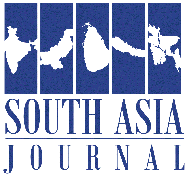 DAVID BREWSTER
DAVID BREWSTER
Recent developments are destabilising the camps in Bangladesh which house some 1.1 million Rohingya refugees. International partners, including Australia, will need to work with Bangladesh to help steady the situation in the camps to avoid large numbers of people making the perilous boat journey to Southeast Asia and beyond.
Bangladesh maintains that the “forcibly displaced Myanmar nationals” driven across the border since 2017, must be repatriated to Myanmar and will not be permitted to settle permanently. In the camps, Rohingya’s minimum nutrition needs are met, but they are not permitted to work, gain an education or even build permanent structures to live in.
Over the years, some Rohingyas have been able to leave Bangladesh for Malaysia or other destinations. This includes young men escaping conscription into insurgent groups and girls who are sent to “marry” Rohingya men overseas. But overall, Rohingyas have left the Bangladesh camps only in relatively modest numbers.
But the relative stability of the camps may now be drawing to an end. The last couple of years has seen an uptick in Rohingya refugee flows out of Bangladesh, and the number is expected to increase this year. Recent developments over the past 12 months may only further increase push factors for Rohingyas to flee Bangladesh.
For one thing, in the neighbouring Myanmar state of Rakhine, just across the border from the camps, the Arakan Army insurgent group has had major successes against government forces. It now controls around 90% of the territory of Rakhine state, and although Myanmar government forces still hold several major towns, their position is fragile.
Smuggling ventures may become more organised, including those sponsored from Southeast Asia or even Australia.
Increased fighting in Rakhine has seen some 150,000 additional Rohingya refugees flee to Bangladesh in recent months, with many more expected this year. The full takeover of the state by the Arakan Army could lead to the expulsion of the Rohingyas who remain in Rakhine. A wider collapse in central government authority across Myanmar could trigger big new population movements of Rohingyas and other ethnic groups from across the country.
The Arakan Army takeover of Rakhine state has also affected the flow of drugs into Bangladesh from Myanmar, including a nasty methamphetamine called “Yaba”. This has long been transported across the Bangladesh border by Rohingya criminal groups. The success of the Arakan Army has largely cut Rohingya groups out of the trade, significantly reducing one of the few sources of income for Rohingyas.
Security in the camps has also become ever more dire. Tension is evident between rival militant groups the Rohingya Solidarity Organisation and the Arakan Rohingya Salvation Army, with a brief truce brokered between the groups breaking down. Crime is also rife. The wider population may conclude that the camps are no longer safe to stay in.

Another major development is the likely reduction in rations provided in the camps through international aid. Rations provided via the UN World Food Program and other international groups are currently set at a value of US$12.50 per month – enough to keep people from starving. But the withdrawal of USAID funding could see an initial reduction in rations from as early as October. Aid workers believe that a ration cut would likely push many refugees out the camps in a search for work and food, including a possible increase in boat departures after the end of the monsoon season.
Bangladesh authorities are trying to stop unauthorised departures, claiming to have stopped dozens of boats carrying several thousand people since the beginning of 2024. But the Bangladesh Navy and Coast Guard are severely under-resourced and lack proper surveillance systems to detect departures, and many of their vessels are unserviceable, limiting their ability to respond. They may find it difficult to stop a major exodus from the camps.
The cost levelled by people smugglers likely constrains the number of people making the trip, said to be as much as $4,000 per person. But smuggling ventures may become more organised, including those sponsored from Southeast Asia or even Australia.
Bangladesh has long taken a relatively passive approach towards neighbouring Myanmar despite the humanitarian disaster. It feared the potential to do further damage to the integrity and governance of a problematic neighbour and hoped for the negotiated repatriation of Rohingyas.
But Bangladesh’s new government which took power last year is taking a more open approach to engagement with the Arakan Army. This includes proposals to open a “humanitarian corridor” into Rakhine state to get supplies to Rohingya communities and others that remain there. But this proposal was withdrawn in the face of opposition from the Bangladesh military and opposition groups. Some hope that with the right incentives, Arakan nationalist groups may agree to the repatriation of Rohingyas out of the camps, but that possibility seems a long way off.
Australia has stepped up its engagement with Bangladesh, including signing an MOU on Civil Maritime security and safety in September 2024 and adopting standard operating procedures for unlawful migration and human trafficking in March 2025. These provide structures for enhanced engagement between Australian and Bangladesh authorities to address irregular migration.
In the meantime, the Bangladesh authorities and Bangladesh’s international partners will need to deal with an increasingly unstable security environment in the Rohingya camps. If not addressed, there could be a major exodus of Rohingya refugees fleeing Bangladesh for other countries.
